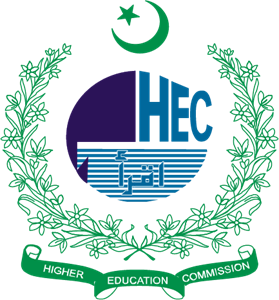Architectural Documentation for Cultural Heritage: A Case Study of Haribhai Pragji Karia High School, Karachi
Abstract
 Abstract Views: 0
Abstract Views: 0
Documentation is an umbrella term that comprises a number of phases: architectural, historical, social, economic, and ethnographic documentation. However, architectural documentation is considered a primary step towards a systematic cultural heritage preservation process. Heritage preservation is a contested issue in many developing countries, such as Pakistan, which are grappling to meet the basic necassities of everyday life. The situation gets consolidated with a vulnerable state of heritage legislative framework and its reduced implications. Thus, the current study aimed to discuss the process of architectural documentation of the Doctors’ Mess, also known as Haribhai Pragji Karia High School, as a case in one of the live projects carried out in Karachi. The methodology adopted for this study revolved around the various stages involved in the process, such as archival consultation, measured architectural documentation, on-site (field) exercises, and photographic documentation. The process further focused on the architectural investigation of this historic structure located in Karachi’s Ranchore Line Quarter. The findings of the current study showed how critical it is for any project's implementation to have a firm foundation in the form of accurate architectural drawings and other relevant data. The accuracy of the restoration/revitalization project can be judged on the basis of good quality drawings produced through the meticulous architectural documentation process. In conclusion, the documentation revealed previously unrecorded details about the building’s architectural features, its issues of decay, and its possible reasons, shedding light on its evolution and the cultural influences that shaped its design. Eventually, the current study highlighted the importance of thorough documentation in the preservation of heritage buildings. Moreover, it also offered a detailed record that would aid in the ongoing efforts to maintain cultural heritage for future generations.
Downloads
References
Aldenderfer, M. (2011). Peopling the Tibetan plateau: Insights from archaeology. High Altitude Medicine & Biology, 12(2), 141–147.
Australia International Council on Monuments and Sites. (2013). Burra Charter & practice notes. https://australia.icomos.org/publications/burra-charter-practice-notes/
Bailie, A. F. (1997). Kurrachee: Past, present and future. Oxford University Press.
Boivin, M. (2020). The sufi paradigm and the makings of a vernacular knowledge in colonial India. Springer International Publishing.
Center for Disaster Philanthropy. (2024, April 25). 2023 Turkey-Syria earthquake. https://disasterphilanthropy.org/disasters/2023-turkey-syria-earthquake/
Cheema, Y. (2007). The historical quarters of Karachi. Oxford University Press
Feilden, B. (2007). Conservation of historic buildings. Routledge.
Hasan, A. (2022). Karachi: Before the British conquest. Institute of Historical & Social Research.
Hassani, F. (2015). Documentation of cultural heritage; techniques, potentials, and constraints. The International Archives of the Photogrammetry, Remote Sensing and Spatial Information Sciences, 40, 207–214. https://doi.org/10.5194/isprsarchives-XL-5-W7-207-2015
Hawari, M. (2024, Feburary 28). Israel destroys Palestinian cultural heritage sites in Gaza. Institute of Palestine Studies. https://www.palestine-studies.org/en/node/1655264
Kalmati, G. H. (2022), Karachi: Glory of the east. Endowment Fund Trust for the Preservation of the heritage of Sindh.
Lari, Y., & Lari, M. S. (2001). The dual city: Karachi during the Raj. Oxford University Press.
Mekonnen, H., Bires, Z., & Berhanu, K. (2022). Practices and challenges of cultural heritage conservation in historical and religious heritage sites: Evidence from North Shoa Zone, Amhara Region, Ethiopia. Heritage Science, 10(1), Article e172. https://doi.org/10.1186/s40494-022-00802-6
Mustansar, H., & Siddiqui, K. S. (2020). Role of cultural spaces in the recognition of cultural heritage. Pakistan Journal of History and Culture, 51(2), 40–61.
Patias, P. (2006, April 24–29). Cultural heritage documentation [Paper presentation]. International Summer School Digital Recording and 3D Modeling. Creta, Grecia.
Soomro, T. A. (2024). Reflections on the importance of built heritage inventory as a tool for preservation in Karachi–a case study of Wadhumal Odharam (Jail) Quarter in Karachi, Sindh, Pakistan. Built Heritage, 8(1), Article e3. https://doi.org/10.1186/s43238-023-00112-1
Soomro, T. A., & Kumar, R. (2013, October 15–16). Documentation & recording of the forgotten heritage–case study of the historic core of Karachi [Paper presentation]. ICOMOS Thailand International Conference: The Cases of Forgotten Heritage. Chiang Mai, Thailand.
Soomro, T. A., & Soomro, M. A. (2017). Planning failure of satellite town: A case study of Korangi, Karachi-Pakistan. Mehran University Research Journal of Engineering & Technology, 37(1), 209–222. http://dx.doi.org/10.22581/muet1982.1801.19
Stephenson, L. (2023). Cultural heritage: Its significance and preserving. Anthropology, 11(4), Article e321.

Copyright (c) 2024 Faryal Sikander, Tania Ali Soomro, Shazia Abro

This work is licensed under a Creative Commons Attribution 4.0 International License.
JAABE follows an open-access publishing policy and full text of all published articles is available free, immediately upon publication of an issue. The journal’s contents are published and distributed under the terms of the Creative Commons Attribution 4.0 International (CC-BY 4.0) license. Thus, the work submitted to the journal implies that it is original, unpublished work of the authors (neither published previously nor accepted/under consideration for publication elsewhere). On acceptance of a manuscript for publication, a corresponding author on the behalf of all co-authors of the manuscript will sign and submit a completed Copyright and Author Consent Form.
Copyright (c) The Authors





